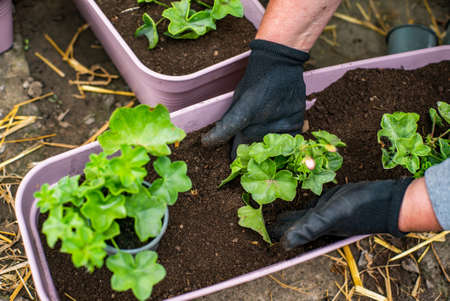1. Understanding the Pacific Northwest Climate and Ecosystems
The Pacific Northwest (PNW) is known for its lush green landscapes, towering conifers, and abundant rainfall. But to successfully create a native plant landscape in this region, it’s important to understand the diverse climate zones and ecosystems that define it. From the misty coastal areas to the dry inland valleys, each zone has unique conditions that influence which native plants will thrive.
Climate Zones in the Pacific Northwest
The PNW spans from northern California through Oregon, Washington, and into British Columbia. It includes several distinct climate zones:
| Region | Main Characteristics | Typical Rainfall |
|---|---|---|
| Coastal Areas | Mild temperatures, high humidity, frequent rain | 60–100+ inches annually |
| Willamette Valley | Mild winters, dry summers | 35–50 inches annually |
| Cascade Foothills & Mountains | Cooler temps, heavy snowfall in winter | 40–80 inches annually (mostly snow at higher elevations) |
| Eastern Washington & Oregon | Drier climate, hot summers, cold winters | 10–20 inches annually |
Soil Types and Their Impact on Plant Selection
The soil types across the PNW are as varied as its climates. In western regions like the Willamette Valley or coastal forests, soils are generally loamy and rich in organic matter—great for supporting moisture-loving native plants. However, eastern parts of Washington and Oregon often have sandy or rocky soils with low fertility. Knowing your soil type helps you pick native species adapted to those conditions.
Common Soil Types by Region:
- Coastal & Western Valleys: Loamy and well-drained but moisture-retentive
- Cascade Foothills: Rocky with good drainage; may need soil amendments for planting
- Easterly Inland Areas: Sandy or clay-heavy soils; often require drought-tolerant natives
Native Habitats That Shape Plant Choices
The natural habitats found throughout the PNW give clues to which plants are best suited for different landscapes. Whether youre replicating a woodland understory or a sunny prairie meadow, choosing species from local ecosystems helps support pollinators and wildlife while reducing maintenance needs.
Main Native Habitat Types:
- Tidal Wetlands & Estuaries: Great for water-tolerant species like sedges and rushes
- Mature Conifer Forests: Ideal for shade-loving ferns and groundcovers like salal or Oregon grape
- Pine-Oak Woodlands: Perfect for drought-hardy shrubs and flowering perennials
- Shrub-Steppe Grasslands: Supportive of grasses and wildflowers adapted to arid conditions
This understanding of climate, soil, and habitat helps lay the foundation for designing a successful native plant landscape tailored to your part of the Pacific Northwest.
2. Benefits of Landscaping with Native Plants
Choosing native plants for your Pacific Northwest garden offers more than just natural beauty—it supports the local environment in many important ways. Whether you live in western Washington, Oregon, or parts of northern California, using plants that naturally grow in your region can make your landscaping easier to maintain and more eco-friendly.
Supports Biodiversity
Native plants provide essential food and habitat for local wildlife. Birds, bees, butterflies, and other beneficial insects rely on these plants for survival. When you use native species, youre helping to maintain a healthy ecosystem right in your own yard.
Examples of Native Plants That Support Wildlife:
| Plant Name | Wildlife Supported |
|---|---|
| Red-flowering Currant (Ribes sanguineum) | Hummingbirds, bees |
| Oregon Grape (Mahonia aquifolium) | Birds, pollinators |
| Douglas Aster (Symphyotrichum subspicatum) | Butterflies, bees |
Conserves Water
The Pacific Northwest has a unique climate with wet winters and dry summers. Native plants are adapted to these conditions and usually require less watering once established. This helps reduce your water bill and conserves an important natural resource.
Water Needs Comparison:
| Type of Plant | Typical Summer Watering Needs |
|---|---|
| Native Plants | Low (after establishment) |
| Lawn Grass (non-native) | High (frequent watering) |
Reduces Maintenance
Because native plants are well-suited to local soil and weather conditions, they generally need less fertilizer, pest control, and pruning. This means more time enjoying your garden and less time working in it.
- No need for chemical fertilizers or pesticides
- Less weeding due to better plant health
- No mowing like traditional lawns require
Promotes Sustainability
A landscape filled with native plants creates a more sustainable outdoor space. It reduces the need for synthetic inputs, supports local ecosystems, and creates a long-lasting garden that thrives year after year.
If youre looking for a beautiful, low-maintenance yard that works with nature instead of against it, native plant landscaping is the way to go in the Pacific Northwest.
![]()
3. Top Native Plant Species for Pacific Northwest Gardens
The Pacific Northwest is home to a wide variety of native plants that are not only beautiful but also well-adapted to the regions unique climate and soil conditions. Whether youre working with full sun, deep shade, moist soil, or dry slopes, theres a native plant that can thrive in your garden. Below is a curated list of top native trees, shrubs, perennials, and groundcovers that fit different garden styles and growing conditions.
Trees
| Common Name | Botanical Name | Light Needs | Soil Type |
|---|---|---|---|
| Western Red Cedar | Thuja plicata | Partial Shade to Full Sun | Moist, Well-Drained |
| Douglas Fir | Pseudotsuga menziesii | Full Sun | Well-Drained |
| Vine Maple | Acer circinatum | Partial Shade | Moist, Rich Soil |
Shrubs
| Common Name | Botanical Name | Light Needs | Soil Type |
|---|---|---|---|
| Red Flowering Currant | Ribes sanguineum | Full Sun to Partial Shade | Well-Drained |
| Salal | Gaultheria shallon | Shade to Partial Shade | Moist, Acidic Soil |
| Oceanspray | Holodiscus discolor | Full Sun to Partial Shade | Drought-Tolerant Once Established |
Perennials & Ferns
| Common Name | Botanical Name | Light Needs | Soil Type |
|---|---|---|---|
| Sword Fern | Polystichum munitum | Shade to Partial Shade | Damp, Well-Drained Soil |
| Camas Lily | Camassia quamash | Full Sun to Partial Shade | Mildly Moist Soil in Spring, Drier in Summer |
| Bleeding Heart (Western) | Dicentra formosa | Shade to Partial Shade | Damp, Rich Soil |
Groundcovers & Grasses
| Common Name | Botanical Name | Light Needs | Soil Type |
|---|---|---|---|
| Kinnikinnick (Bearberry) | Arctostaphylos uva-ursi | Full Sun to Light Shade | Well-Drained, Sandy Soils Preferred |
| Western Trillium | Trillium ovatum | Deep Shade to Partial Shade | Rich, Moist Forest Soil |
| Roemer’s Fescue (Idaho Fescue) | Festuca roemeri / Festuca idahoensis var. roemeri | Full Sun to Light Shade | Dry to Medium Moisture, Well-Drained Soil |
Selecting the Right Plants for Your Garden Style and Conditions:
No matter what type of garden you’re planning—woodland retreat, drought-tolerant xeriscape, or pollinator-friendly meadow—native plants provide beauty and function. Here are some quick tips for matching plants with your space:
- Shady Woodland Gardens: Choose ferns like Sword Fern and flowering perennials like Western Bleeding Heart.
- Sunny Borders: Go for drought-tolerant shrubs like Oceanspray and colorful additions like Red Flowering Currant.
- Pollinator Gardens: Add Camas Lily and Ribes species to attract bees, butterflies, and hummingbirds.
- Low Maintenance Landscapes: Use Kinnikinnick or Roemer’s Fescue for easy-care groundcover.
By choosing plants that naturally belong in your region, youll create a garden thats not only easier to care for but also supports local ecosystems.
4. Design Ideas for Native Plant Landscapes
Creating a beautiful and functional native plant landscape in the Pacific Northwest is all about working with nature, not against it. With its rich biodiversity and distinct seasons, this region offers endless inspiration for gardens that are both stunning and sustainable. Here are some design ideas to help you get started.
Layout Ideas That Work with Nature
Start by observing your yard’s natural features—sunlight, shade, moisture levels, and existing vegetation. Use these observations to guide your layout. Instead of forcing symmetry or formal lines, try flowing shapes that mimic natural landscapes.
Sample Layout Concepts
| Type of Area | Suggested Native Plants | Design Tip |
|---|---|---|
| Sunny Open Space | Nodding onion, Oregon sunshine, Red-flowering currant | Create layered beds with taller plants in the back |
| Shaded Woodland Corner | Sword fern, Western trillium, Evergreen huckleberry | Add winding paths and moss-covered stones for a forest feel |
| Moist Low Spot | Sedges, Skunk cabbage, Pacific bleeding heart | Design a rain garden to manage runoff naturally |
Planting Schemes for Seasonal Interest
Select a mix of native perennials, shrubs, and trees that bloom or change color throughout the year. This ensures your garden stays visually interesting across all seasons.
Seasonal Highlights:
- Spring: Trilliums and camas lilies bring early color.
- Summer: Blanketflower and showy milkweed attract butterflies.
- Fall: Vine maple turns brilliant red and orange.
- Winter: Evergreen species like salal provide structure and greenery.
Create a Pollinator Paradise
The Pacific Northwest is home to many native bees, butterflies, and hummingbirds. To support them, plant clusters of nectar-rich flowers that bloom at different times. Avoid pesticides and include host plants for caterpillars too.
Pollinator-Friendly Plant Groupings:
| Pollinator Type | Favorite Native Plants |
|---|---|
| Bumblebees | Lupine, Yarrow, Ocean spray |
| Butterflies | Mules ears, Pearly everlasting, Milkweed |
| Hummingbirds | Red columbine, Penstemon, Honeysuckle (Lonicera ciliosa) |
Aim for Visual Harmony with Naturalistic Design
Mimic meadows, forest edges, or streambanks using plant groupings that occur naturally in the region. Stick to 3–5 main plant types per bed to avoid clutter. Repeat colors and textures throughout your space for a cohesive look.
Tips for Natural Flow:
- Select plants with complementary heights and forms.
- Create soft edges using grasses like tufted hairgrass or Idaho fescue.
- Add logs or stones as accents to enhance the wild feel.
A thoughtfully designed native plant landscape not only looks great—it supports local wildlife and thrives with minimal care. Use these ideas as a starting point to bring the spirit of the Pacific Northwest into your own backyard.
5. Maintenance Tips for Thriving Native Gardens
Keeping your Pacific Northwest native garden healthy and vibrant all year long doesn’t have to be complicated. With a few simple, eco-friendly practices, you can maintain a beautiful landscape that supports local wildlife, conserves water, and thrives with minimal intervention.
Watering: Less is More
Native plants in the Pacific Northwest are adapted to the region’s natural rainfall patterns. Once established, many require little to no supplemental watering. However, during prolonged summer dry spells, young or newly planted natives may need occasional deep watering.
Watering Tips:
- Water early in the morning or late in the evening to reduce evaporation.
- Use soaker hoses or drip irrigation to deliver water directly to the roots.
- Avoid overwatering — soggy soil can lead to root rot.
Pruning for Shape and Health
Regular pruning keeps native shrubs and trees looking tidy and encourages healthy growth. It also helps remove dead or diseased branches that could attract pests.
Best Times to Prune:
| Plant Type | Ideal Pruning Time |
|---|---|
| Deciduous Trees & Shrubs | Late winter or early spring before new growth starts |
| Evergreens | Late spring after new growth has emerged |
| Flowering Shrubs | Right after blooming ends |
Mulching: Retain Moisture and Suppress Weeds
A layer of mulch helps conserve soil moisture, regulate temperature, and reduce weed competition. Use organic mulches like bark chips, leaf litter, or composted wood chips.
- Apply mulch 2–4 inches deep around plants, keeping it a few inches away from trunks and stems.
- Refresh mulch annually in spring or fall as needed.
Weeding Without Chemicals
Weeds can compete with your native plants for nutrients and water. Hand-pulling is often the most effective and eco-friendly method for small gardens. For larger areas, consider sheet mulching or using ground covers to outcompete invasive species.
Pest Management the Natural Way
A balanced native garden often attracts beneficial insects that keep pests in check. Avoid chemical pesticides which can harm pollinators and other helpful critters.
Natural Pest Control Strategies:
- Encourage birds, ladybugs, and spiders by planting diverse species and including shelter like brush piles or birdhouses.
- If necessary, use neem oil or insecticidal soap — safe options that won’t disrupt your garden’s ecosystem.
- Inspect plants regularly for signs of trouble so you can address issues early.
With thoughtful maintenance tailored to the Pacific Northwest climate and ecology, your native plant garden will flourish naturally while supporting the region’s biodiversity.


